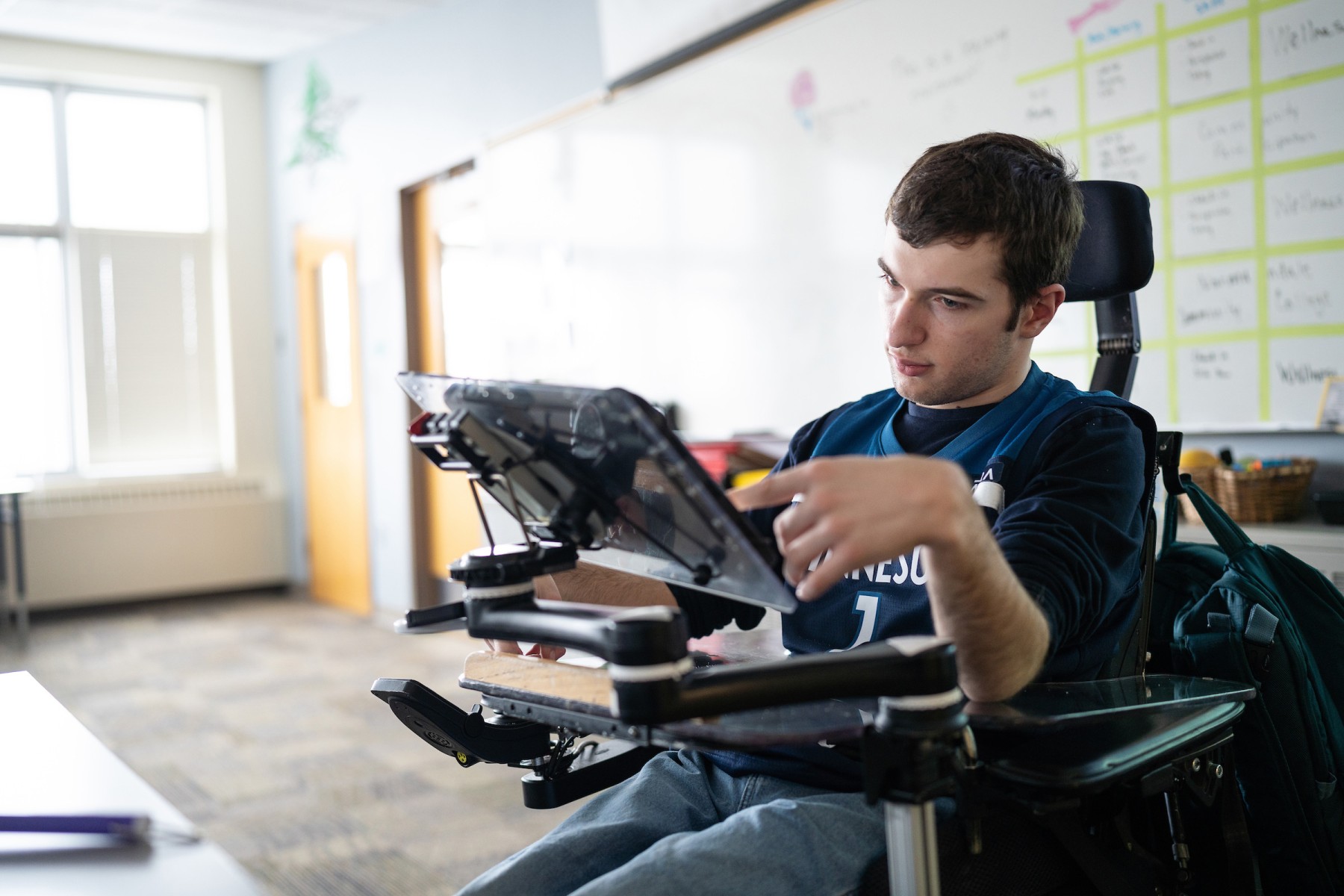What is augmentative and alternative communication?
Augmentative and alternative communication, sometimes abbreviated to AAC, is any form of communication that improves, supports, or even replaces speech and writing. AAC communication includes electronic and nonelectronic communication aids.
AAC systems can be as simple as a set of pictures, or as involved as electronic speech devices. AAC also includes strategies children and families can use together, for better communication.
Who benefits from augmentative and alternative communication?
AAC tests and devices can benefit anyone who has trouble speaking or communicating. Some children struggle with speech because of language development delays. Others have physical limitations or thinking and learning disabilities that make spoken language difficult or impossible. Adults can have speech or language difficulties due to disabilities that began during childhood.
Kids who benefit from AAC often have the following conditions:
- Cerebral palsy.
- Genetic conditions such as Down Syndrome.
- Brain injury.
- Muscular dystrophy, spinal muscular atrophy and other neuromuscular conditions.
- Other disabilities that affect muscle tone.
- Spinal cord injury.
What is an augmentative and alternative communication evaluation?
An AAC evaluation involves:
- Gathering information about your child’s needs and abilities.
- Finding the right AAC device or method.
- Adjusting AAC equipment to the system or strategy.
During an AAC evaluation:
- A speech and language pathologist evaluates your child’s speech, language and communication skills.
- An occupational therapist looks at how your child’s physical needs and skills will respond to different forms of AAC.
- If your child uses seating or mobility equipment, a certified seating practitioner will help you with equipment-related decisions like AAC device mounting options, seating adjustments and other wheelchair modifications.
- We encourage you to participate in the AAC evaluation. We also welcome involvement from teachers, school or community therapists, group home staff members and others who can offer helpful information and insight.
After an AAC evaluation, we make recommendations based on your child’s needs. We might suggest your child:
- Use an AAC system for the first time, or replace their existing AAC system.
- Try various AAC systems during therapy sessions.
- Try specific strategies for more effective communication.
- Attend speech and/or occupational therapy sessions to develop skills that might make future use of communication devices easier.
Regardless of test outcomes, we’ll help you address your child’s communication needs on an ongoing basis as their skills change and as technology advances.
How do I make an appointment for an AAC evaluation?
Before your child can receive an AAC evaluation at Gillette Children’s, they need an order from a health care provider. The provider might be from Gillette or a different facility.
Once we receive the order, we’ll contact you to set up an evaluation. We’ll also give you a questionnaire to complete and return before your visit. Learn more about an AAC Episode of Care.
Find more resources to help you prepare for a visit to Gillette.
AAC Services at Gillette Children's
If your child struggles with speech or communication due to a complex condition or disability, AAC devices and therapy programs might help. The Gillette AAC team includes speech and language pathologists, occupational therapists, and assistive technology specialists who are experts in their fields.
Working closely with you, our providers will test your child’s skills and needs, then recommend programs to help them communicate using both electronic and nonelectronic AAC devices. We also design custom mounts, and educate your entire family about effective communication strategies.
Each of your child’s providers at Gillette has a deep understanding of the way complex conditions such as cerebral palsy and brain injury affect speech and communication.
 Home Page
Home Page




